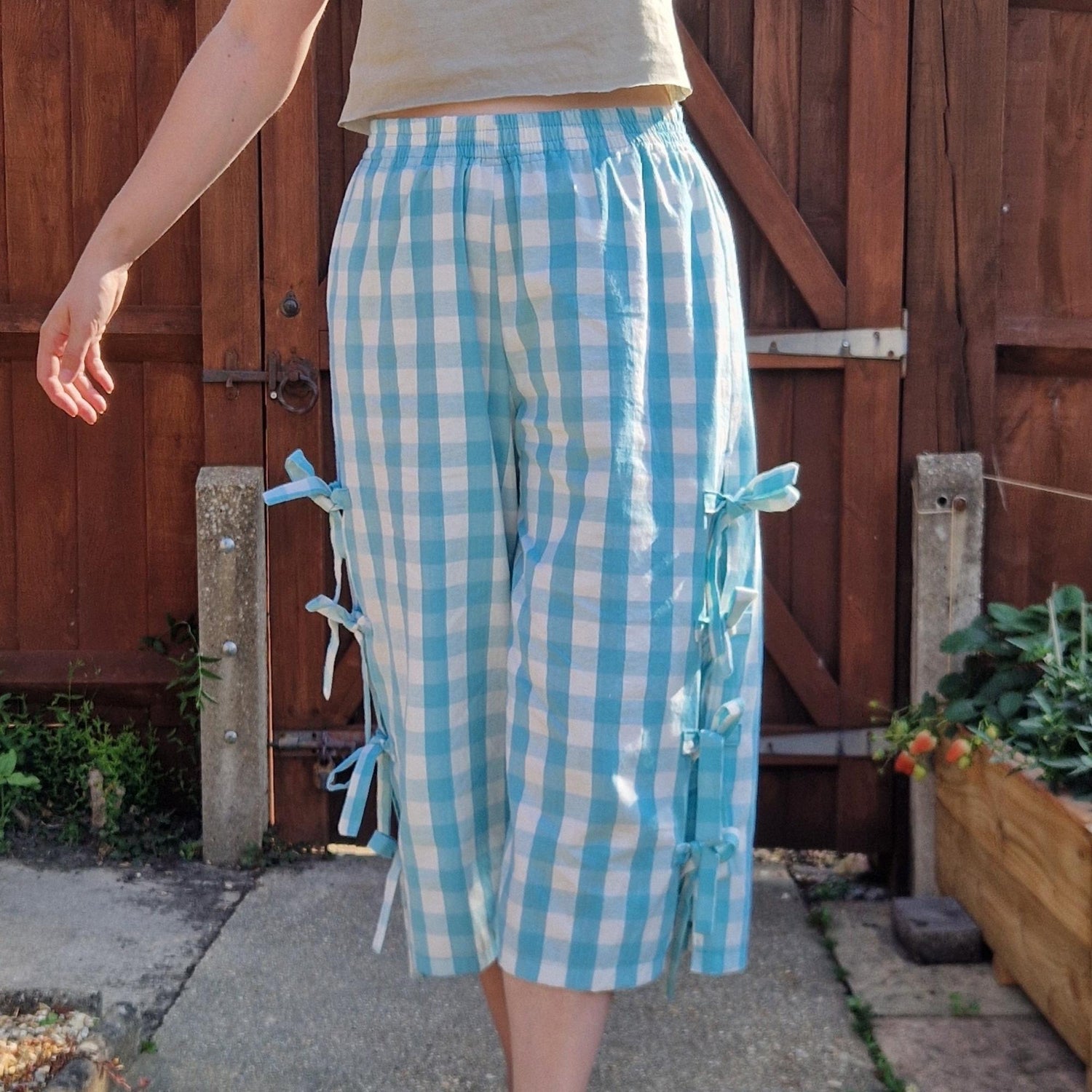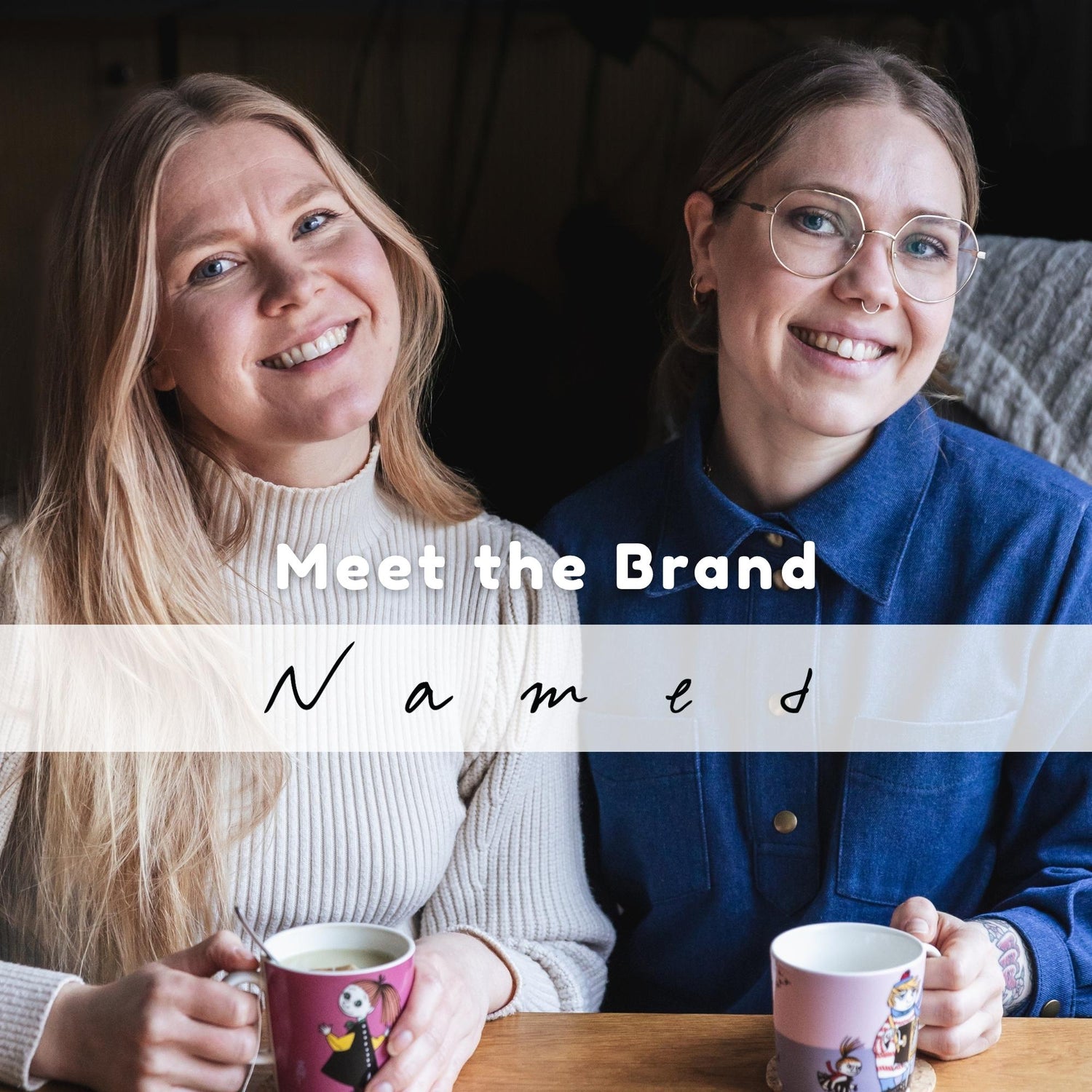The fashion industry’s impact on our planet is huge—but the rise of eco-friendly fabrics is helping to turn things around. Choosing truly sustainable fabrics can make a big difference, whether you’re sewing your own wardrobe or shopping consciously.
These lower-impact textiles use fewer resources, reduce waste, and create longer-lasting clothing. In fact, many eco-friendly fabrics not only cut water and energy use but also help build a more circular, responsible fashion industry.
In this guide, we’ll explore 11 sustainable materials that are revolutionising fashion in 2025. From natural plant-based fibres like hemp and linen to recycled innovations such as ECONYL and next-generation textiles made from pineapple leaves, these fabrics are shaping a better future for sewing and style. If you’ve ever wondered which fabrics are truly sustainable and worth investing in, this is where to start.
Building a Sustainable Wardrobe with Eco-Friendly Fabrics
So, what exactly makes one fabric more sustainable than another? The truth is, not all “eco-friendly fabrics” live up to the label. Some sound green on the surface but still use huge amounts of water, toxic dyes, or exploit workers in their production. That’s why it’s important to look beyond buzzwords and focus on the real impact a fabric has on people and the planet. It's why here at Sew Eco Fabrics, we created our Sew Eco Scores - so you can see a little bit more truth behind the fabric.
When we talk about truly sustainable fabrics, we’re looking for materials that:
✅ Come from renewable or recycled sources
✅ Use less water and fewer harmful chemicals in production
✅ Can be recycled, composted, or safely biodegrade at the end of their life
✅ Are produced in supply chains that value fair and ethical labour
✅ Carry independent certifications (like GOTS, OEKO-TEX, GRS, or Bluesign) for traceability and trust
✅ Leave a smaller carbon footprint from start to finish
By choosing eco-friendly fabrics that tick these boxes, you’re not only reducing your personal impact but also supporting an industry shift towards better practices. And the best part? Many of these fabrics perform just as well — if not better — than conventional textiles.
Let’s dive into the materials leading this change, starting with the plant-based powerhouses that have stood the test of time.
Plant-Based Powerhouses
1. Organic Cotton
Why It Matters: Cotton is one of the most used fabrics in the world, but conventional cotton is incredibly resource-heavy, needing huge amounts of water, pesticides, and land.
Organic cotton is different. Grown without synthetic chemicals, it helps protect soil health, farmers, and surrounding ecosystems. The fibres are soft, breathable, and versatile, making them a favourite for everything from shirts and dresses to children’s clothes.
Certifications & Traceability: The most reliable organic cotton is GOTS certified, which covers the whole chain from farm to fabric. OEKO-TEX® certified organic cotton also guarantees chemical safety, though it doesn’t always give farm-level transparency.
You'll find our fabrics with Organic Cotton under Sew Eco Score 4. We carry everyday organic cottons, like gingham and Merchant and Mills seersucker cottons. Making for cool, breathable clothes whilst keeping you snuggled up cosy.
Shop our Certified / Organic Cotton range ->
2. Cotton Gabardine
Why It Matters: Gabardine is a tightly woven cotton, traditionally used for suiting, outerwear, and utility garments. Its dense weave makes it strong and durable while still breathable — ideal for trousers, jackets, and workwear-inspired pieces. The crisp drape means it holds shape well, making it a go-to for structured sewing projects.
Certifications & Traceability:
The gabardine we stock is STeP by OEKO-TEX® certified, meaning it’s produced in factories that meet strict sustainability and social responsibility standards.
This fabric has a Sew Eco Score of 3, thanks to its certification and strong social and sustainable production practices. However, as it is cotton without organic certification, it does not reach our top score
Shop our collection of Gabardine from Lise Tailor ->
3. Organic Hemp
Hemp has been used in textiles for thousands of years, and it’s finally making a comeback due to being one of the most sustainable fibres available. The plant grows quickly without the need for pesticides or fertilisers, uses very little water, and actually improves soil health through phytoremediation. It’s considered carbon negative, meaning it absorbs more CO₂ than it releases during growth.
In fabric form, hemp is strong, breathable, and naturally antibacterial. It feels cool and fresh against the skin, making it ideal for summer clothing, while also being incredibly durable — hemp clothing is said to last three times longer than cotton.
Certifications & Traceability: Being the most natural and one of the best growing plants around - you don't tend to see this fibre getting certified due to it's sustainability creds for being itself. But if you happen to find it with a GOTS certification or OEKO-TEX®, this is an added bonus.
Even if Hemp had eco-credentials, we'd Sew Score this at a 4 for behind sustainably awesome.
Best uses for Hemp: Shirts, summer dresses, casual trousers. Also great for bedding and table linens.
4. Organic Linen
Linen is made from the flax plant, which thrives in poor-quality soil and requires very little water or pesticides. What makes linen so remarkable is that every part of the flax plant can be used — nothing goes to waste. It’s one of the oldest known textiles, valued for its strength, breathability, and timeless beauty.
In fabric form, linen is cool to wear in summer yet insulating in cooler weather. It absorbs moisture quickly and dries fast, making it comfortable in hot, humid climates. Over time, it softens and develops a lived-in texture that many sewists adore. Its natural sheen and slubby texture give garments a relaxed but refined look.
Certifications & Traceability: Being the most natural and one of the best growing plants around - you don't see this fibre getting certified due to it's sustainability creds for being itself. But if you happen to find it with a GOTS certification or OEKO-TEX®, this is an added bonus.
Linen being a naturally sustainable fibre deserves a Sew Eco Score of 4, whether it had any eco-creds or not.
Best Uses:
Dresses, shirts, trousers, blouses, bedding, and soft home furnishings. Linen is also prized for summer wear thanks to its natural cooling effect.
🔄 Recycled & Circular Materials
What does circular mean? Sometimes the fabrics we already have created (and that includes the bad ones) are more sustainable if we continue to reuse them, rather than incinerating them. The harm has already been done when manufacturing them - let's not waste it by burning the evidence. Circular represents us recycling the materials through reprocessing into something different/something new.
5. Recycled Cotton
Why It Matters: Cotton is one of the world’s most resource-hungry crops, so reusing it is a big step toward sustainability. Recycled cotton is created by breaking down textile waste — either pre-consumer offcuts from factories or post-consumer garments — and spinning the fibres into new yarns. This process saves huge amounts of water and energy compared to growing virgin cotton and diverts waste away from landfill.
The main drawback is fibre length: recycled cotton fibres are shorter and weaker, so they’re often blended with other fibres to improve durability. Even so, recycled cotton plays a vital role in circular fashion.
Certifications & Traceability:
The best option is Global Recycled Standard (GRS) certified recycled cotton, which verifies recycled content and ethical production. Some blends may also carry OEKO-TEX® chemical safety certification.
Where it would land on our Sew Eco Scores: If certified and traceable, sew eco score 3. If there are gaps in the supply chain but we know it was recycled, we'd pop it at a number 2.
Best Uses:
Casual wear like T-shirts and sweatshirts, denim, and home textiles.
6. Recycled Wool
Why It Matters: Wool is a beautiful, natural fibre — warm, breathable, and durable. But virgin wool comes with a high footprint, from land use to animal welfare concerns. Recycled wool offers a smarter alternative by re-spinning discarded wool garments, offcuts, and production waste into new yarns. This reduces demand for virgin wool and cuts down on waste.
Recycled wool often retains the insulating and breathable qualities of virgin wool while promoting a circular system. Modern processes also ensure it can be soft, luxurious, and versatile.
Certifications & Traceability:
RWS certification confirms recycled content and transparent production. Some suppliers also use Responsible Wool Standard (RWS) in blends, though this applies more to virgin content.
Where it would land on our Sew Eco Scores: If certified and traceable, sew eco score 3. If there are gaps in the supply chain but we know it was recycled, we'd pop it at a number 2.
Best Uses:
Outerwear, coats, scarves, knitwear, and suiting fabrics.
7. ECONYL® – Ocean Plastic
Why It Matters: ECONYL® is regenerated nylon made from discarded fishing nets, carpets, and industrial plastic waste. Through an innovative process, the waste is depolymerised and re-spun into nylon yarns with the same quality as virgin nylon. This not only diverts waste from oceans and landfills but also reduces reliance on fossil fuels.
It’s strong, stretchy, and resilient, making it popular for activewear, swimwear, and performance fabrics. However, as with all synthetics, microfibre shedding is an ongoing concern.
Certifications & Traceability:
ECONYL® production is transparent and backed by the Global Recycled Standard (GRS), ensuring recycled content and responsible processes.
Sew Eco Score: a Score of 3 if it's ECONYL certified. It would be a 1 without ECONYL's closed-loop guarantee and just labelled as "recycled" due to have no transparency, and with it still being a harmful "fibre" for our waterways every time we wash it. It's a great use of recycled plastic from our oceans, but not necessarily into garments that will continue to be washed time and again, releasing microplastics into our water.
Best Uses:
Swimwear and activewear.
Next-Generation & Certified Alternatives
8. Viscose (FSC + STeP Certified)
Why It Matters: Viscose is a fibre made from wood pulp, loved for its silky drape and breathability. But conventional viscose has a dark side — the production process uses toxic chemicals that, when mismanaged, can pollute rivers and harm workers.
That’s why certifications matter. With FSC ensuring the wood comes from responsibly managed forests, and STeP by OEKO-TEX® confirming safer, more responsible factory practices, certified viscose is a far more eco-friendly option. It gives you the same fluid, elegant fabric but with greater transparency and care for both people and planet.
Our Sew Eco Score: Depending on the certification or production, the score would vary. However for a FSC and STeP certified, we would use 3. Due to chemicals still being used (whether they are being handled responsibly or not) there is actually an alternative to viscose altogether, which we mention below 😉
Best use for the Viscose: Tops, Blouses, Dresses, Trousers.
Discover the collections from small independent designers such as Lise Tailor and Cousette.
9. TENCEL™ Lyocell – The Closed-Loop Champion
Why It Matters: TENCEL™ Lyocell looks and feels a lot like viscose, but it’s produced in a much cleaner way. Instead of the harsher chemicals used in traditional viscose, TENCEL is made with a non-toxic solvent in a closed-loop system, meaning almost everything is recycled and reused. This makes it one of the lowest-impact man-made fibres available today.
Soft, breathable, and moisture-wicking, TENCEL is perfect for everyday clothing. It’s also naturally antibacterial, making it a great choice for loungewear, underwear, and even activewear.
Sew Eco Score: TENCEL are the best to come out of the textile industry, there innovative fibres and processes earn themselves the highest sustainable score of 4.
Best Uses:
Dresses, tops, pyjamas, loungewear, and soft trousers.
10. EcoVero™ – The Cleaner Viscose
Why It Matters: EcoVero™ is Lenzing’s eco-friendly take on viscose. It has the same soft, silky feel and beautiful drape sewists love, but it’s produced with up to 50% less water and energy than conventional viscose. Unlike uncertified viscose, which can be linked to deforestation, EcoVero™ only uses wood pulp from sustainably managed forests.
Think of it as the “middle ground”: you still get a lightweight, breathable fabric with fluid movement, but with much stricter controls on sourcing and production.
Certifications & Traceability:
-
EU Ecolabel certified, verifying lower impact across the supply chain.
-
FSC/PEFC certified wood sources.
-
Transparent supply chains, so you can trace EcoVero™ back to its origins.
Sew Eco Score: If the eco-viscose is branded with LENZING, it gets a score of 4. The best viscose yet.
Best Uses: Perfect for floaty dresses, skirts, lightweight trousers, and blouses that need elegant drape with a cleaner footprint.
11. Piñatex® – Pineapple Leaf Leather
Why It Matters: Piñatex® is an innovative material made from the fibres of pineapple leaves — an agricultural by-product that would otherwise go to waste. By turning this residue into a durable textile, it offers a plant-based alternative to leather and PVC. Lightweight yet strong, it can be finished in different textures and colours, making it popular for bags, shoes, and accessories.
While Piñatex® isn’t typically used for dressmaking, it’s part of the exciting movement towards using agricultural waste to create new textiles, helping reduce both animal leather demand and reliance on plastics.
Certifications & Traceability: Some Piñatex® variants are now OEKO-TEX® certified, meaning they’ve been tested for harmful substances. Overall supply chain transparency is still developing, but it’s one of the better known next-gen “leathers.”
We'd give this a Sew Eco Score of 4. It's innovative transforming something from the waste creating from production of food. It has a low impact, it's an alternative to plastic and leather.
The Takeaway: Sewing with Sustainable Fabrics
From timeless fibres like organic cotton, hemp, and linen to innovations like EcoVero™, TENCEL™, and Piñatex®, the world of eco-friendly fabrics is growing more exciting every year. But navigating sustainability claims can be confusing, which is why we created our Sew Eco Scores — to give you clear, transparent guidance.
At Sew Eco Fabrics, we only stock responsible, more consciously chosen fabrics as our bare minimum. That means when you shop with us, you can feel confident that every fabric you choose is already a step in the right direction — no guilt, no second-guessing. Our Eco Scores simply help you see at a glance which options go further with certifications, transparency, and traceability.
Your sewing should be joyful, not stressful. Every stitch you make with these fabrics supports a fairer, cleaner, and more circular fashion future — while giving you a me-made wardrobe you can wear with pride. 🌱
Browse our collection of certified, responsibly chosen fabrics today — and start your next project with confidence.




